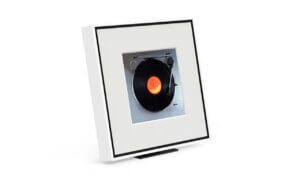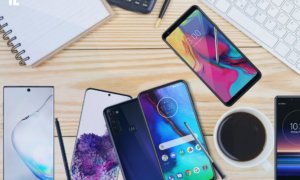We all agree that selfies have become a phenomenon and smartphone brands are racing to provide better quality and experience on the front camera(s) for both still and video. The trend is all about increasing aperture sizes for better low light performance but this comes with a downfall – the camera’s depth of field becomes smaller and the fixed focus is no longer a viable solution.
Front camera autofocus is not a new technology (even if continues to be a rare breed in the smartphone world) so I was intrigued when I found out that Samsung added a pinch of “fairy dust” and introduced smart autofocus with Galaxy S8 and S8+.
What’s the catch? Well, since smart autofocus on the front camera is most likely used for selfies, let’s call it selfie autofocus from now (it does have a nicer ring to it, right?). So, selfie autofocus implies a different approach than fixed focus or basic contrast auto focus: it uses face detection technology to focus on the face of the user for a better experience and increased quality.
Innovation without glitches or hiccups is a myth (especially if it’s a flagship series premiere like S8’s selfie autofocus) so of course that I started thinking of possible issues, especially in contexts like live blogging or video documenting. The adventure started with this guy’s video and evolved into a 3 month journey divided in two parts: an initial stress test during a weekend in June and another batch of tests conducted now, in September. Let’s see what I found out. #mobilemagic
FIRST TEST RESULTS
I spent a summer weekend testing a Samsung Galaxy S8 unit with Android Nougat 7.0 like any of you would: in the car, in a supermarket when my kid wasn’t looking, indoors and outdoors, with sunglasses and hat (on & off).
Guess what? In various scenarios, like when I was driving, doing errands indoors or simply walking on the street, my face was completely out of focus. The S8 camera’s almost perpetual hunt for focus generated a wobble effect that affected the experience directly.
Wobbling was annoying, but bearable. If you add to the wobbling effect what appeared to be a lack of stabilization or stabilization without rolling shutter elimination, some materials shot with S8’s front camera become really hard to digest.
Since the phone in question was a Samsung Galaxy S8, not a generic Android phone, I started to suspect that it was probably relying on a software stabilization linked with the face detector. It seemed that whenever a face was detected, the image shifted around to keep the face in place.
If that’s true, then the face detector can’t provide rolling shutter info, only a global position. So, when you face the camera closely, you’ll get a lot of parallax that’s almost impossible to correct. That means your live will become “jellowy” and “stretchy”, so you’re forced to stay put while broadcasting / recording or hope that there are brave souls among your fans that don’t get dizzy from lack of stabilization combined with focus hunting.
COMPARATIVE TEST RESULTS: SAMSUNG GALAXY S8 VS. OPPO R9S
Three months and a number of updates later, I wanted to see if (and how) Samsung tackled this camera-related issue. After a few more days of testing, the first thing I did was to re-evaluate my initial theory.
S8 uses a high aperture (f1.7), so it needs dedicated focus on the front camera for a good user experience. And they have done exactly that but from what I could see, it’s not a face detection AF. We are looking at what appears to be the following combo: contrast detect focus (CDAF) with face priority coupled with a sensor with long read-out time.
The last updates have improved the front camera autofocus I saw in action in June, but issues remain, as you can see in the video below (the non-stabilized feed and the lack of rolling shutter correction are still there).
For a better understanding of the process, I have compared the front camera on the S8 with the one on Oppo R9s in a side by side test. R9s has an f2.0 aperture coupled with a fixed focus and also includes selfie experience technologies such as real time beautification.
In many cases, the front camera experience on Oppo R9s is comparable or even better than the one offered by Samsung Galaxy S8.
In the future, Samsung should consider a newer sensor as well as a phase detect autofocus (PDAF) or other dedicated autofocus technologies for the front camera.
What did I learn in these three months?
At this moment, S8’ front camera is probably not the best option for keeping your social accounts fresh and updated with videos, but it is a very good option for high quality selfies.
Is the Samsung’s technology combo a breakthrough? Yes. It’s the first selfie autofocus front camera that has the potential for unrivaled image experience. It works very well for stills but not for video.
Is this fact a deal breaker? No. I am sure that Samsung will update it further and the concept will be perfected over time.
Follow TechTheLead on Google News to get the news first.























